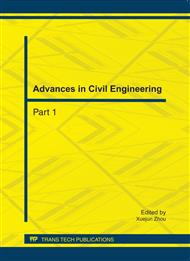[1]
. Yide Bu . Floor heating and the individual hot measurement technology.[M]. China Architecture and Building Press.(2007),In Chinese
Google Scholar
[2]
GB 50019-(2003).Design specification of the heating ventilation and air conditioning.[S] ,In Chinese
Google Scholar
[3]
Yang Zhao. The analysis of low heat protection and heat transfer between residential units [D] 2008,In Chinese
Google Scholar
[4]
JGJ_26-(2010).Residential Building Energy Efficiency Design Standards in Severe-cold and Cold Area.[S] ,In Chinese
Google Scholar
[5]
Fengmei Sun,Li Nianping Li, Shuqin Chen, Yanqun Xie.Comparison Analysis Between Simulation and Practice Measur ement of Energy Consumption Based on DEST- H Softwar e in Urban Residence.1006- 8449(2007) 06-0043-04,In Chinese
Google Scholar
[6]
Yiwen Jian, Yi Jiang. Analysis on problems existed in simulation of indoor thermal environment for residential buildings.[J].HV&AC. V37, n7, (2007) ,In Chinese
Google Scholar
[7]
Yi Jiang, Xiu Yang. Using the equivalent electric to analysis the energy. [J].HV&AC V32, n5,May (2007) ,In Chinese
Google Scholar
[8]
Balaras,Constantinos A.1;Gaglia,Athina G.1,Georgopoulou,Elena2; Mirasgedis,Sevastianos2;Sarafidis,Yiannis2;Lalas, Dimitris P.2 European residential buildings and empirical assessment of the Hellenic building stock,energy consumption,emissions and potential energy savings. Building and Environment,v 42,n 3, pp.1298-1314,March ,(2007)
DOI: 10.1016/j.buildenv.2005.11.001
Google Scholar
[9]
Ueno,Tsuyoshi1;Inada,Ryo2;Saeki;Osamu2;Tsuji,Kiichiro2.Effectiveness of an energy-consumption information system for residential buildings. Applied Energy,v 83,n 8,pp.868-883, August, (2006)
DOI: 10.1016/j.apenergy.2005.09.004
Google Scholar
[10]
Tommerup,H.1;Svendsen,S.1Energy savings in Danish residential building stock.Energy and Buildings,v 38,n 6,pp.618-626,June,( 2006)
DOI: 10.1016/j.enbuild.2005.08.017
Google Scholar


